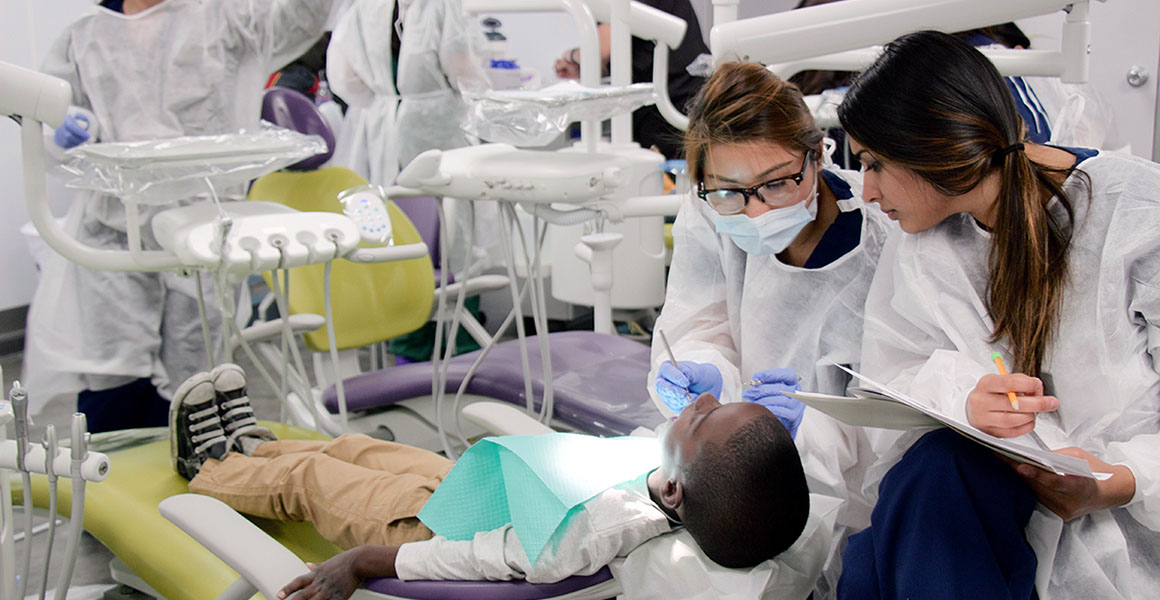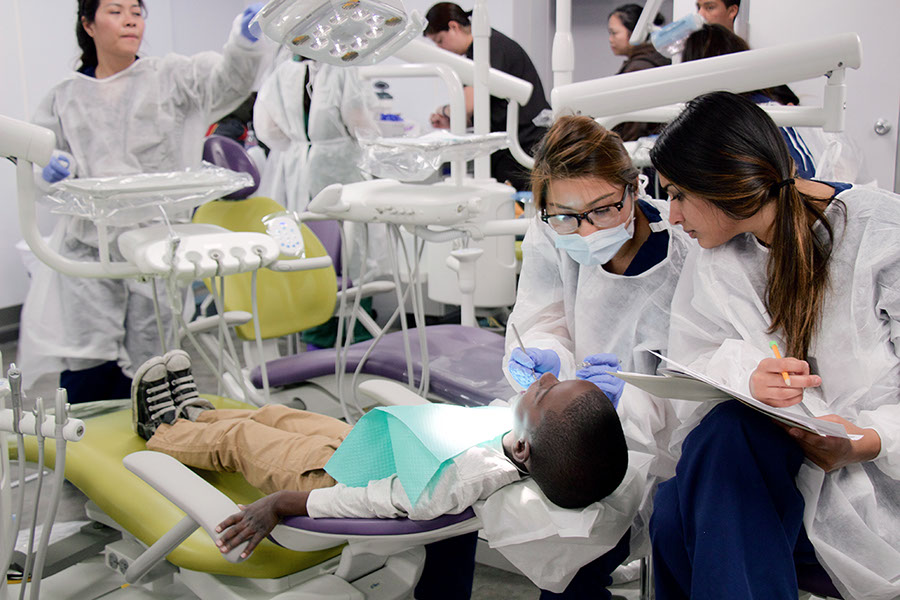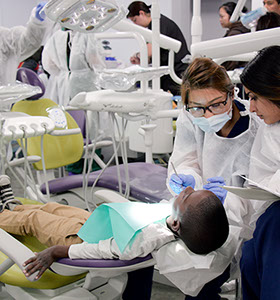USING YOUR CLINIC
HOW TO BUY A
MOBILE CLINIC
STEP 8. USING YOUR MOBILE CLINIC
HOW TO BUY A MOBILE CLINIC
The most exciting part of owning an Odulair Mobile Clinic begins after you take delivery of your mobile health unit. This is when you launch your healthcare outreach program with your new medical vehicle. This allows you to start interacting with patients in their own community, but without leaving the comforts of your medical facility behind. This allows you to increase your effectiveness in delivering healthcare. No matter which medical specialty you're performing, you'll be excited to put your new Mobile Medical Clinic into practice. But first, there are a few things to keep in mind as you get ready to deploy your new medical van.
TRAILER TOW VEHICLES
Odulair manufactures Mobile Clinics on many base platforms including truck chassis, ISO containers, and trailers. For those Mobile Health Units on trucks, the tow vehicle is the truck, which is always attached. So, you do not need to worry about how to tow your mobile medical unit. For those Mobile Clinics in ISO containers, They can be moved with any truck that is designed to move either 20 foot or 40 foot ISO containers, depending on the size of your Mobile Clinic.
If you purchased a Mobile Clinic based in a trailer, you might be wondering, "What do I need to tow my trailer and who can drive it?" The answer depends on your trailer.
If your trailer is a 53 ft straight or double expandable trailer you'll need a full-size tractor to pull it, something with at least a 400 hp diesel engine. In most of the United States, drivers that specialize in these types of vehicles are required to have a Commercial Driver's License (CDL) to operate one on U.S. public roads. However, this is not the case in all countries internationally. Your local heavy truck dealer can help you find a driver that will meet your needs. A critical dimension for selecting a tractor is the back of cab to king pin dimension, this is called the "swing radius." Odulair will provide you with all of the information that you need to locate the proper tow tractor. If you are interested in purchasing the tow tractor, we can even add the tow tractor of your choice to your Odulair order to ensure that everything works perfectly.
If you purchase a smaller Mobile Medical Clinic based in a gooseneck trailer or bumper pull trailer, you can pull that trailer with a smaller tow vehicle. However, the maximum rated towing capacity of the tow vehicle must be at least as much as the Gross Vehicle Weight Rating (GVWR) of the trailer. Odulair will provide you with the GVWR, which is the total weight of the trailer plus all of the installed medical equipment, plus the maximum amount of additional payload the trailer can safely carry without overloading critical weight bearing components like axles, tires and frame. Basically, the GVWR is the maximum weight that the trailer can hold without damaging it. The tow vehicle manufacturer determines the towing capacity of the tow vehicle. They will also provide a maximum combined GVWR for the tow vehicle and the trailer (GCVWR). These will usually be found in the owner's manual as well as a manufacturer's website. Most of these trailers can be pulled with a medium duty truck, which bridges the gap between pickups and semi tractors. These are generally larger pickup trucks like the Ford F550. Your local truck dealer can advise you once they know your trailer GVWR. If you need help with identifying a proper tow vehicle for these trailers, just ask, at Odulair, we're always here to help.
Although medium duty truck drivers are not required to have a speciatly driver's license, in most U.S. States, a CDL is required if the combined GVWR of the tow vehicle and trailer (i.e., GCVWR) is 26,000 lbs. or more.
REGISTRATION AND LICENSE PLATES
A mobile clinic, just like any new vehicle, is registered in its home state. The MCO is surrendered in exchange for its first title. License plates can be purchased from the state of registration. In some States, there is no sales tax on semi trailers like there is on your car. However, most states have a diesel fuel tax. In addition to paying the fuel tax in your home state, a fuel tax permit must be obtained whenever crossing the border into another state. But, if less than 25% of the miles driven are outside of the state of registration, you can apply for an apportioned license, in which the tax is paid to the home state, which then shares it with other states. Additional fuel permits are not needed with apportioned license plates, but drivers need to retain accurate mileage records.
LEVELING
Everything flexes a little bit, including your trailer. For that reason, trailers need be leveled for stationary use, especially if you have slide-out expansions, large doors, and / or large awnings.
Leveling is the very first thing that should be done after the trailer is unhitched. Odulair includes leveling legs in all of our designs that incorporate large expandable sides. Leveling systems come in automatic and manual versions. The automatic systems are computer operated, automatically activating the hydraulic leveling legs until the trailer is level. They also have a manual override in case you want to bring your own level and fine tune, but it is really not necessary with automatic leveling systems. Manual operation systems are similar but without the computer. They require you to push button control of each leg, and you need to stop when it's level. The manual systems require more time and expertise to operate properly. Therefore, we only use automatic leveling systems at Odulair.
Please note that leveling legs are not landing legs. Landing legs are two heavy duty legs with pads that crank down mechanically to support the front end of the trailer when it is not resting on the tractor. When a driver backs up to the trailer to hook up, he'll move the tractor slowly backward until the king pin hits the end of the slot in the coupler on the tractor. Sometimes the impact can move the trailer back a few inches. Landing legs are designed to withstand that impact, whereas leveling legs are not. They are designed to go up and down but not to withstand sliding horizontally, i.e., forward, backward or sideways, with the weight of the trailer on them. Coupling and uncoupling the trailer should only be done when the trailer is resting on the landing legs, not the leveling legs. It should also only be coupled or uncoupled by a professional driver accustomed to doing so.
It is best to uncouple the tractor before leveling, even if the tractor stays with the trailer. The hydraulic cylinder in the leveling legs can exert a lot of force, enough to lift the trailer as well as the rear of the tractor. If the driver does not uncouple the hitch before leveling, and the leveling legs travel significantly to level the front of the trailer, the trailer king pin will also be lifting up the rear of the tractor along with it. This will result in the rear of the tractor partially hanging from the king pin, with its weight suspended from the front of the trailer. It only takes a few seconds to pull the lever to release the king pin, even if you don't move the tractor. Once again remember, it is very important to only have a professional tractor driver perform these tasks.
COLD WEATHER USE
If you have plumbing in your trailer, or anything that will be damaged if it freezes, you'll need to be careful in cold weather. Before going into freezing weather it's important to drain all the water from the plumbing system. If you have a generator set, remember to check the coolant for cold weather, and if you plan to run it in cold weather, use a winter blend fuel if it has a diesel engine. You might also consider lighter weight engine oil for winter use.
BATTERIES AND STORAGE
Vehicle batteries are most commonly the sealed lead acid type (SLA). It's the nature of new SLA batteries to gradually discharge about 5% per month if left unused/uncharged, even if nothing is connected to them. This is called the self discharge rate. The self discharge rate will likely be higher if the batteries are left connected, even if everything is turned off. If you plan to store the trailer for an substantial amount of time, it's a good idea to disconnect the batteries but also be prepared to recharge them, if necessary, when you want to use the trailer again. If your trailer is equipped with a charger powered by 120 volt power, you can plug it in ahead of time to charge the batteries.



<
>
–
Odulair, LLC 109 E. 17th Street #63, Cheyenne WY 82001 USA Phone: +1 307 459 1350 E-mail: info@odulair.com
© 2008 - 2017 Copyright Odulair LLC. All Rights Reserved. Odulair, Kiosk Clinics and "medical from the ground up" are trademarks of Odulair LLC.



















